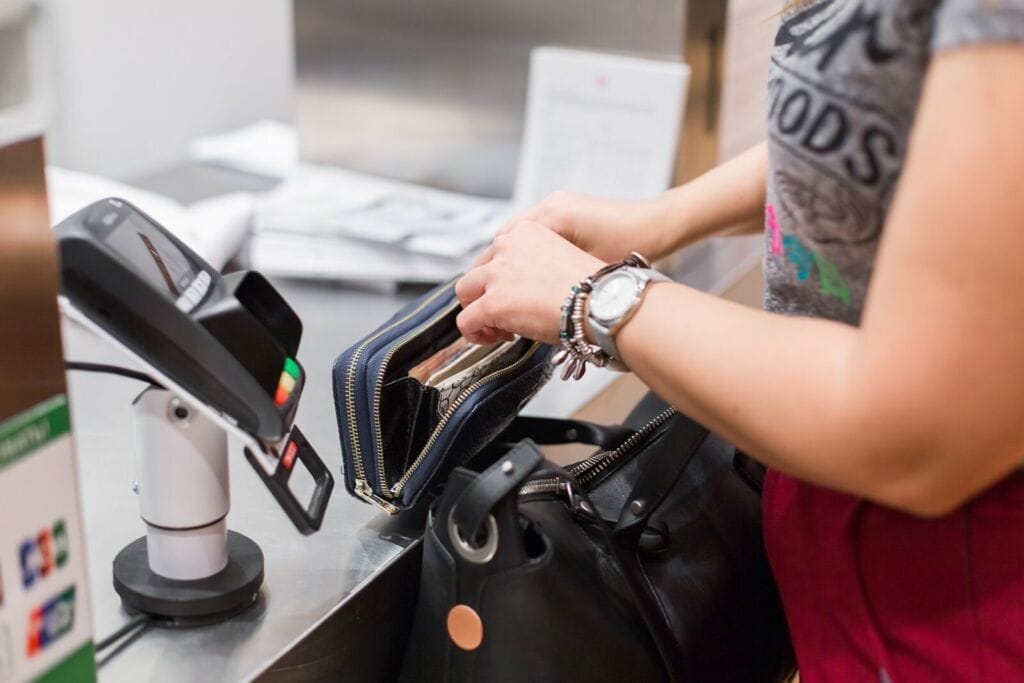With the rise of contactless payments and digital security threats, RFID-blocking wallets have become a popular solution for protecting credit cards and personal information. These wallets are designed to block the radio frequency signals that RFID-enabled cards emit, preventing unauthorized scanning or skimming of your data. But once you purchase an RFID-blocking wallet, a common concern is how to know whether it’s actually doing its job. Below, we’ll explore how RFID wallets work and how you can test whether your RFID wallet is functioning as intended. For those looking for added sophistication, many RFID wallets come with designer quality, blending security with style, so you don’t have to compromise on aesthetics.
How Does an RFID Wallet Work?
RFID chips in contactless credit cards emit radio waves when prompted by a nearby scanner. These signals transmit information, such as your card number and expiration date, to complete transactions. Without protection, these signals can be intercepted by unauthorized RFID readers, which is where RFID-blocking wallets come in. The wallet’s special lining blocks or absorbs the electromagnetic signals, preventing the transmission of data.

How Can I Test if My RFID Wallet Is Working?
Now that you understand the basics of how RFID wallet’s function, it’s important to know how to verify that your RFID wallet is effectively blocking unwanted signals. Here are a few simple methods to check if your RFID wallet is doing its job:
1. Test at a Contactless Payment Terminal
One of the easiest ways to test your RFID wallet is by attempting to use your RFID-enabled credit or debit card at a contactless payment terminal while it’s still inside the wallet. Here’s how you can do it:
- Go to a store with a contactless payment terminal.
- Without removing your card from the wallet, hold the wallet up to the terminal.
- If the terminal does not register the card, then the RFID-blocking feature is likely working as intended.
- If the terminal reads the card, your RFID wallet may not be effective at blocking the signal.
This method gives you direct feedback on whether your wallet is successfully blocking RFID signals. However, be mindful that some wallets may only partially block signals depending on where the card is placed inside the wallet.
2. Use an RFID-Enabled Access Card
If you have access to an RFID-enabled door or gate, you can use this to test your wallet’s effectiveness. Many workplaces or gyms issue RFID-enabled access cards that work similarly to RFID credit cards. Here’s what you do:
- Place the access card inside your RFID wallet.
- Attempt to scan the wallet with the access card at the RFID reader for the door or gate.
- If the door or gate does not open, the wallet is likely blocking the RFID signal.
- If the door or gate opens, your wallet may not be providing sufficient RFID protection.
This test works similarly to the payment terminal method and can give you a clear indication of whether the RFID-blocking materials in the wallet are effective.
3. Use an RFID Reader App
Several smartphone apps can be used to read RFID signals. These apps won’t replicate the exact skimming method used by criminals, but they can give you a rough idea of whether your wallet is blocking RFID signals. Here’s how you can use this method:
- Download an RFID reader app (available for Android devices, though they are less common on iOS due to hardware limitations).
- Place your RFID-enabled card inside the wallet and then try to scan it using the app.
- If the app cannot detect your card while it is inside the wallet, then your RFID wallet is working.
- If the app detects the card, it could mean the wallet isn’t providing full RFID protection.
This method may not be as precise as using a payment terminal, but it can provide a quick and easy way to test your wallet’s effectiveness at home.
4. Check the Product Specifications and Certifications
While physical testing is a great way to determine whether your RFID wallet is working, it’s also important to check the product’s specifications and any certifications. Reputable manufacturers will often have their RFID-blocking wallets tested by independent organizations to ensure they meet industry standards for RFID protection.
Check the packaging or the product listing for any certifications that confirm the wallet’s ability to block specific RFID frequencies (usually around 13.56 MHz, which is the standard for most credit cards). Be cautious of vague marketing claims and opt for wallets from trusted brands that provide clear details about their testing and certification processes.
Common Myths About RFID Wallets
There are a few misconceptions about RFID wallets that can cause confusion when trying to test or understand their effectiveness:
- RFID Blocking Isn’t Needed for All Cards: Not every card in your wallet contains an RFID chip. Cards like traditional credit cards with magnetic strips or standard driver’s licenses won’t benefit from RFID blocking. Only cards that enable contactless payments or contain RFID chips are at risk of being skimmed.
- It’s Not 100% Foolproof: While RFID wallets can block signals from being intercepted, no product is entirely foolproof. The effectiveness of an RFID-blocking wallet can depend on the material, design, and placement of the cards inside the wallet. It’s still important to stay vigilant about where and how you use your cards.
Testing whether your RFID wallet is working is a simple process that can be done using contactless payment terminals, RFID-enabled access cards, or even RFID reader apps. These quick and easy methods will give you confidence that your personal and financial information is safe from potential skimming. Additionally, checking for product specifications and certifications can further assure you that your wallet offers genuine RFID protection. With this peace of mind, you can carry your cards securely without fear of unauthorized scans.




